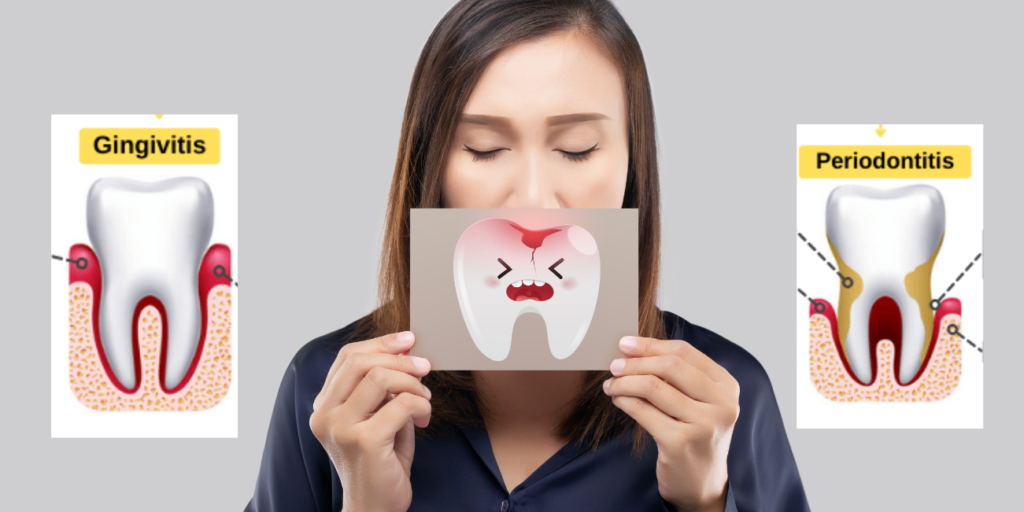Gum infections can be more than just a discomfort—they can signal underlying oral health issues that require prompt attention. Whether you’re grappling with gingivitis, periodontitis, or another form of gum disease, finding the right antibiotic is crucial for effective treatment.
Antibiotics play a pivotal role in combating bacterial infections in the gums, aiding in both relief and recovery.
Imagine having the knowledge to identify the best antibiotic tailored to your specific gum infection. From understanding different types of antibiotics to exploring factors that influence their effectiveness, this guide aims to empower you with insights into making informed decisions about your oral health.
By delving into the intricacies of antibiotic treatment, you’ll gain clarity on how these medications work, potential side effects, and alternative treatments that may complement or substitute antibiotics.
Types of Antibiotics Used
In treating gum infections, several classes of antibiotics are utilized, each targeting specific bacteria responsible for oral health issues. Understanding these classes and their applications can guide effective treatment choices:
Different Classes of Antibiotics
- Penicillins: Effective against a wide range of bacteria; commonly used antibiotics like amoxicillin.
- Macrolides: Used when penicillin is not suitable; examples include erythromycin and azithromycin.
- Tetracyclines: Effective against bacteria that cause gum disease; doxycycline is frequently prescribed.
- Clindamycin: Used for infections where other antibiotics are ineffective or not tolerated.
Specific Antibiotics Commonly Prescribed for Gum Infections
- Amoxicillin: Broad-spectrum antibiotic effective for mild to moderate infections.
- Metronidazole: Often used in combination with other antibiotics for severe gum infections.
- Doxycycline: Effective against bacteria associated with periodontal disease; suitable for patients allergic to penicillin.
- Clindamycin: Reserved for severe infections or those resistant to other antibiotics.
Factors Influencing Antibiotic Choice
When determining the best antibiotic for a gum infection, several factors come into play to ensure effective treatment and patient safety:
Severity and Type of Gum Infection
- Gingivitis vs. Periodontitis: Mild gum inflammation like gingivitis may require less aggressive antibiotics compared to severe periodontitis.
- Localized vs. Generalized Infection: The extent of infection influences whether topical or systemic antibiotics are necessary.
Allergies and Other Medical Conditions Affecting Antibiotic Selection
- Penicillin Allergy: Patients allergic to penicillin may require alternative antibiotics such as macrolides or clindamycin.
- Medical History: Existing medical conditions (e.g., liver or kidney disease) may limit antibiotic options or require adjusted dosages.
- Drug Interactions: Potential interactions with other medications a patient is taking must be considered to avoid adverse effects.
Common Gum Infections Treated
Gum infections vary in severity and treatment approach, requiring tailored antibiotic strategies for effective management:
Gingivitis vs. Periodontitis: Differences and Antibiotic Needs

- Gingivitis: Early-stage gum inflammation characterized by redness, swelling, and bleeding gums. Typically, antibiotics are not the first line of treatment but may be used in severe cases to manage bacterial overgrowth.
- Periodontitis: Advanced gum disease involving deeper infection and potential damage to supporting tissues and bone. Antibiotics like doxycycline or amoxicillin are often prescribed alongside deep dental cleaning procedures to combat bacterial buildup.
Other Types of Gum Infections and Their Treatment
- Pericoronitis: Inflammation around partially erupted teeth, treated with antibiotics like metronidazole to reduce swelling and infection.
- Abscesses: Pus-filled pockets caused by bacterial infection, requiring drainage and antibiotics such as amoxicillin or clindamycin.
- Acute Necrotizing Ulcerative Gingivitis (ANUG): Severe gum infection characterized by painful ulcers and bad breath, treated with antibiotics like metronidazole and improved oral hygiene.
Effectiveness and Side Effects
Understanding how antibiotics work and their potential side effects is crucial for managing gum infections effectively:
How Antibiotics Work Against Gum Infections?
- Bacterial Targeting: Antibiotics target bacteria responsible for gum infections, inhibiting their growth and reducing inflammation.
- Reducing Infection: By eliminating bacteria, antibiotics help control infection and promote healing of gum tissues.
Potential Side Effects and Precautions
- Common Side Effects: Digestive issues such as nausea, diarrhea, or stomach upset are common with antibiotic use.
- Allergic Reactions: Allergies to antibiotics like penicillin can cause rash, swelling, or difficulty breathing and require immediate medical attention.
- Antibiotic Resistance: Overuse or misuse of antibiotics can lead to bacterial resistance, reducing effectiveness over time.
- Precautions: Taking antibiotics as prescribed, completing the full course, and informing healthcare providers of allergies or medical conditions are essential precautions.
Choosing the best antibiotic for a gum infection involves careful consideration of factors like infection type, severity, and individual health conditions. Effective treatment not only alleviates symptoms but also promotes gum health and overall well-being. Consultation with a dental care ensures personalized care and antibiotic selection tailored to your specific needs, minimizing risks and maximizing benefits for a speedy recovery.




